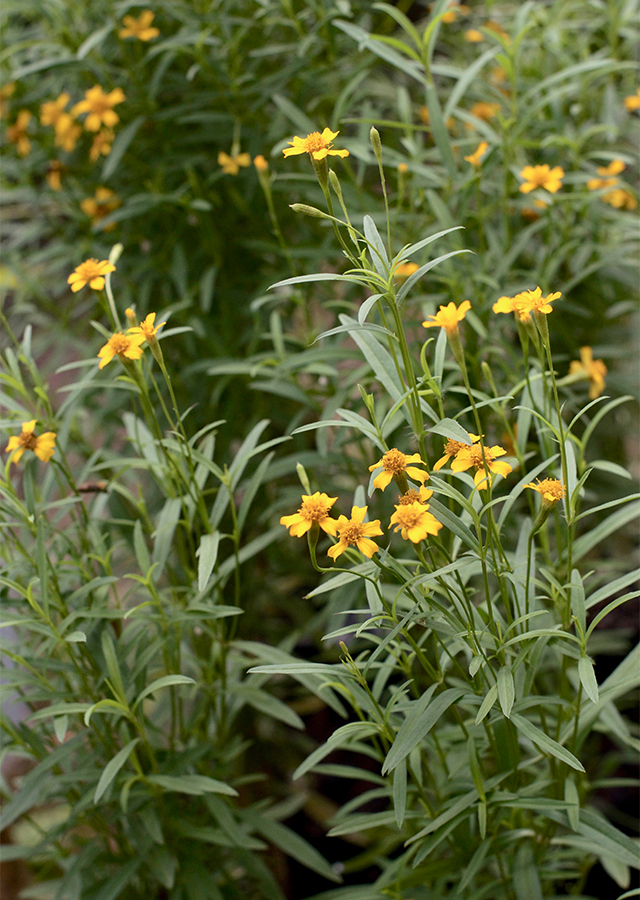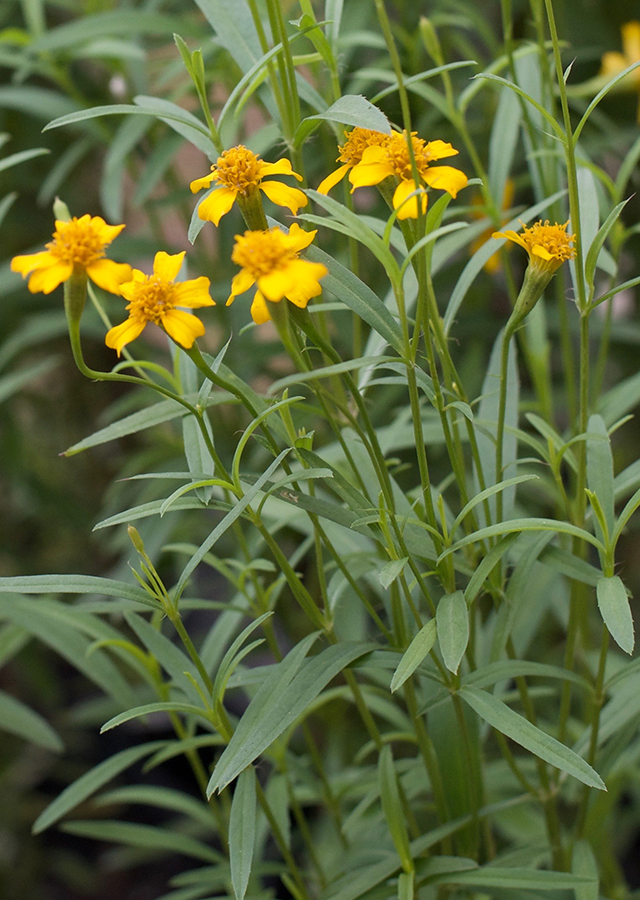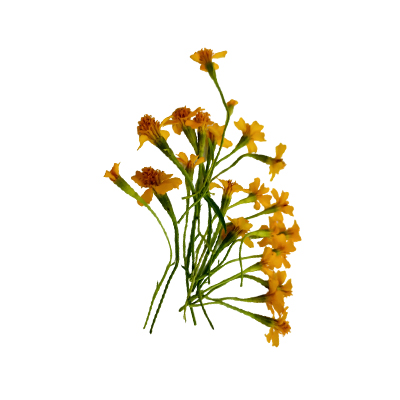Mexican Tarragon
Tagetes lucida Cav.
Asteraceae
Location in our garden
Principal



Synonym
Tagetes anethina Sessé & Moc.
Tagetes florida Sweet
Tagetes gilletii De Wild.
Habitus
Herbaceous. A perennial plant usually growing 40 - 150 cm tall
Part Used
Young pods
Growing Requirements
Full Sunshine
Drought Resistant
Habitat
Forest
Rocky Areas
Grassland
Overview
From eastern most Europe across Central and Eastern Asia to India, Western North America, and South to Northern Mexico, Tarragon is native to a wide region of the Northern Hemisphere. A rich source of potassium from plants. The Arabic word "Estragon" was first named "tharkhoum'" and the Latin word "dracunculus" was possibly derived from the way the roots curl up like a dragon, meaning "little dragon" It is referred to by the French as the "King of Herbs," flavoring much of its classic cuisine.
Vernacular Names
Long hao (Chinese), Dragon or Drakebloed (Dutch), Dragon or Estragon (French), Estragon (German), Esutoragon (Japanese), and Ngải thơm (Vietnamese).
Agroecology
Best cultivated in organically rich, well-drained soils in full sun, dry to medium moisture. Neutral soil is favoured. Stop any wet soil. A sheltered place and year-round mulch are appreciated. In early spring, cut plants on the field. Every 3-4 years, separating the clumps can help keep plants robust. Plants will slowly spread by creeping rhizomes.
Morphology
- Roots - rhizomatous that it uses to spread and readily reproduce.
- Stems - woody, slim with slender branches.
- Leaves - lanceolate, 2–8 cm (1–3 in) long and 2–10 mm (0.1–0.4 in) broad, glossy green, with an entire margin.
- Flowers - produced in small capitula 2–4 mm in diameter, each capitulum containing- up to 40 yellow or greenish-yellow florets. French tarragon, however, seldom produces any flowers (or seeds). Some tarragon plants produce seeds that are generally sterile.
- Fruits - a pappus-less cypsol. It is cultivated as an ornamental plant and is used in spirit absinthe and some other alcoholic drinks as an ingredient.
Cultivation
- By seed - surface sow from late winter to early summer in a greenhouse.
- By division. Division is very easy in spring or autumn.
- By basal cuttings in late spring.
Chemical Constituents
- Tarragon contains tannins, coumarins, flavonoids, and up to 0.8% volatile oil, consisting of up to 70% methylchervicol, which is toxic and potentially carcinogenic. Estragole is the main constituent of tarragon essential oil.
- The undiluted oil may be irritating to the skin.
Traditional Medicinal Uses
- Anti-inflammatory and analgesic effects were seen in the leaf aqueous extracts.
- Studies have indicated antibacterial, anti-inflammatory, hepatoprotective and antihyperglycemic properties, considered antiscorbutic, diuretic, emmenagogue, febrifuge, hypnotic, stomachic and vermifuge.
- Tarragon is used to increase appetite and for stomach problems, toothache, and sweetens the mouth, diuretic. And to encourage menstruation.
- Used for its anticoagulant activity, also as an antiepileptic, in Iranian folk medicine.


